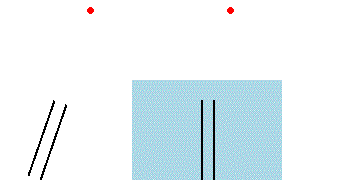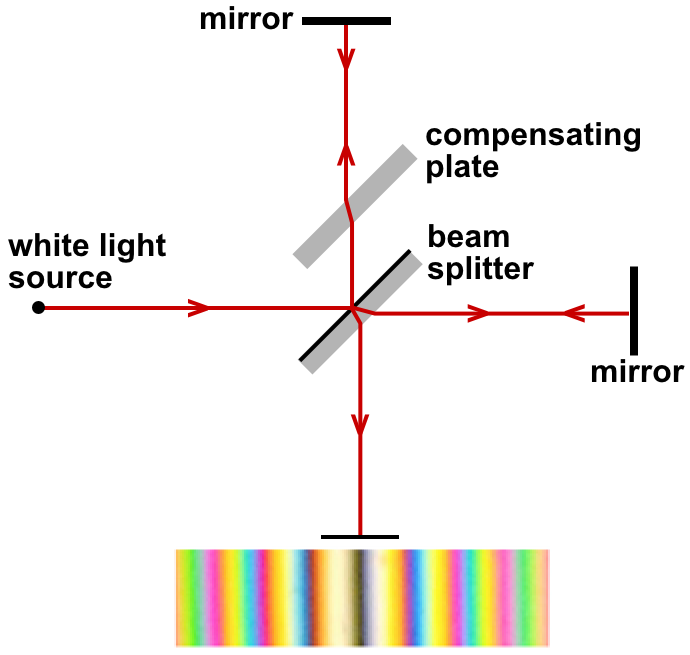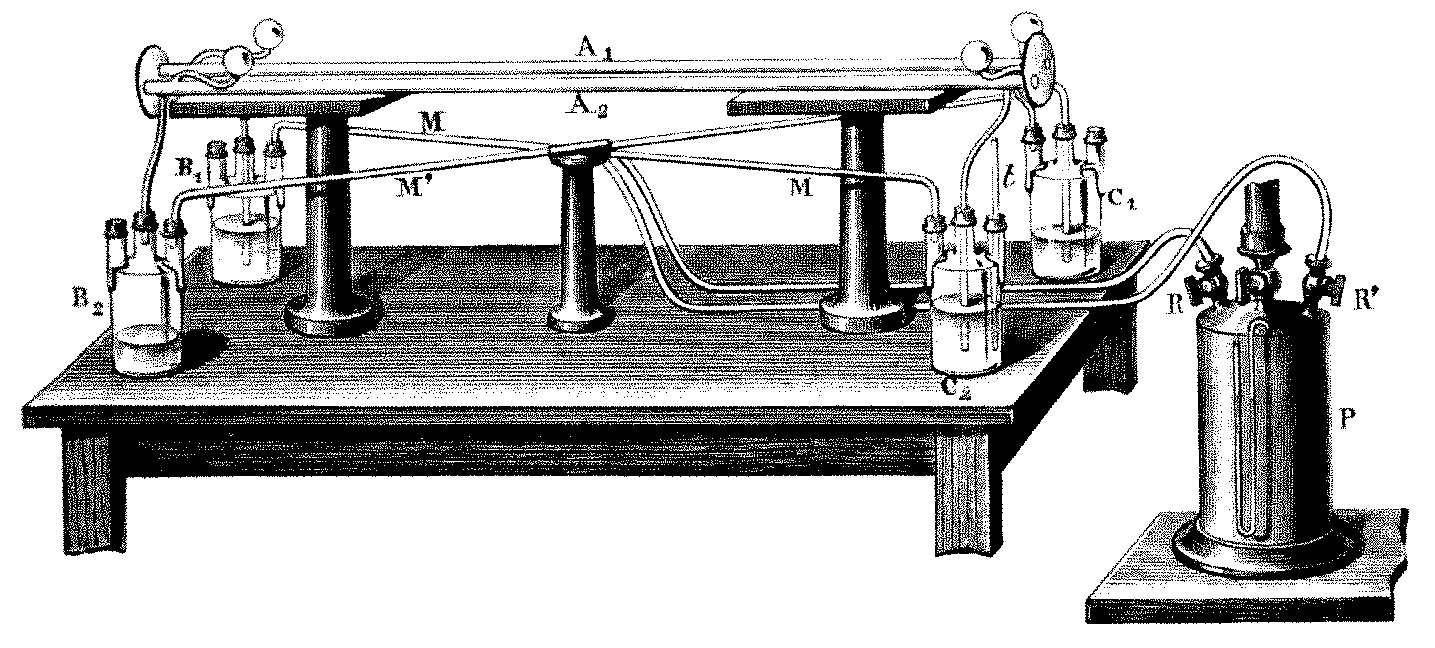|
Aether-dragging
In the 19th century, the theory of the luminiferous aether as the hypothetical medium for the propagation of light waves was widely discussed. The aether hypothesis arose because physicists of that era could not conceive of light waves propagating without a physical medium in which to do so. When experiments failed to detect the hypothesized luminiferous aether, physicists conceived explanations for the experiments' failure which preserved the hypothetical aether's existence. The aether drag hypothesis proposed that the luminiferous aether is dragged by or entrained within moving matter. According to one version of this hypothesis, no relative motion exists between Earth and aether. According to another version, the Earth does move relative to the aether and the measured speed of light should depend on the speed of this motion ("aether wind"), which should be measurable by instruments at rest on Earth's surface. In 1818, Augustin-Jean Fresnel proposed that the aether is partially e ... [...More Info...] [...Related Items...] OR: [Wikipedia] [Google] [Baidu] |
Luminiferous Aether
Luminiferous aether or ether (''luminiferous'' meaning 'light-bearing') was the postulated Transmission medium, medium for the propagation of light. It was invoked to explain the ability of the apparently wave-based light to propagate through empty space (a vacuum), something that waves should not be able to do. The assumption of a spatial plenum (space completely filled with matter) of luminiferous aether, rather than a spatial vacuum, provided the theoretical medium that was required by wave theories of light. The aether hypothesis was the topic of considerable debate throughout its history, as it required the existence of an invisible and infinite material with no interaction with physical objects. As the nature of light was explored, especially in the 19th century, the physical qualities required of an aether became increasingly contradictory. By the late 19th century, the existence of the aether was being questioned, although there was no physical theory to replace it. The ne ... [...More Info...] [...Related Items...] OR: [Wikipedia] [Google] [Baidu] |
Fizeau Experiment
The Fizeau experiment was carried out by Hippolyte Fizeau in 1851 to measure the relative speeds of light in moving water. Fizeau used a special interferometer arrangement to measure the effect of movement of a medium upon the speed of light. According to the theories prevailing at the time, light traveling through a moving medium would be dragged along by the medium, so that the measured speed of the light would be a simple sum of its speed ''through'' the medium plus the speed ''of'' the medium. Fizeau indeed detected a dragging effect, but the magnitude of the effect that he observed was far lower than expected. When he repeated the experiment with air in place of water he observed no effect. His results seemingly supported the partial aether-drag hypothesis of Augustin-Jean Fresnel, a situation that was disconcerting to most physicists. Over half a century passed before a satisfactory explanation of Fizeau's unexpected measurement was developed with the advent of Albert Ein ... [...More Info...] [...Related Items...] OR: [Wikipedia] [Google] [Baidu] |
Michelson–Morley Experiment
The Michelson–Morley experiment was an attempt to measure the motion of the Earth relative to the luminiferous aether, a supposed medium permeating space that was thought to be the carrier of light waves. The experiment was performed between April and July 1887 by American physicists Albert A. Michelson and Edward W. Morley at what is now Case Western Reserve University in Cleveland, Ohio, and published in November of the same year. The experiment compared the speed of light in perpendicular directions in an attempt to detect the relative motion of matter, including their laboratory, through the luminiferous aether, or "aether wind" as it was sometimes called. The result was negative, in that Michelson and Morley found no significant difference between the speed of light in the direction of movement through the presumed aether, and the speed at right angles. This result is generally considered to be the first strong evidence against some aether theories, as well as initiating ... [...More Info...] [...Related Items...] OR: [Wikipedia] [Google] [Baidu] |
Common-path Interferometer
A common-path interferometer is a class of interferometers in which the reference beam and sample beams travel along the same path. Examples include the Sagnac interferometer, Zernike phase-contrast interferometer, and the point diffraction interferometer. A common-path interferometer is generally more robust to environmental vibrations than a "double-path interferometer" such as the Michelson interferometer or the Mach–Zehnder interferometer. Although travelling along the same path, the reference and sample beams may travel along opposite directions, or they may travel along the same direction but with the same or different polarization. Double-path interferometers are highly sensitive to phase shifts or length changes between the reference and sample arms. Because of this, double-path interferometers have found wide use in science and industry for the measurement of small displacements, refractive-index changes, surface irregularities and the like. There are applications, however ... [...More Info...] [...Related Items...] OR: [Wikipedia] [Google] [Baidu] |
Luminiferous Aether
Luminiferous aether or ether (''luminiferous'' meaning 'light-bearing') was the postulated Transmission medium, medium for the propagation of light. It was invoked to explain the ability of the apparently wave-based light to propagate through empty space (a vacuum), something that waves should not be able to do. The assumption of a spatial plenum (space completely filled with matter) of luminiferous aether, rather than a spatial vacuum, provided the theoretical medium that was required by wave theories of light. The aether hypothesis was the topic of considerable debate throughout its history, as it required the existence of an invisible and infinite material with no interaction with physical objects. As the nature of light was explored, especially in the 19th century, the physical qualities required of an aether became increasingly contradictory. By the late 19th century, the existence of the aether was being questioned, although there was no physical theory to replace it. The ne ... [...More Info...] [...Related Items...] OR: [Wikipedia] [Google] [Baidu] |
François Arago
Dominique François Jean Arago (), known simply as François Arago (; Catalan: , ; 26 February 17862 October 1853), was a French mathematician, physicist, astronomer, freemason, supporter of the Carbonari revolutionaries and politician. Early life and work Arago was born at Estagel, a small village of 3,000 near Perpignan, in the ' of Pyrénées-Orientales, France, where his father held the position of Treasurer of the Mint. His parents were François Bonaventure Arago (1754–1814) and Marie Arago (1755–1845). Arago was the eldest of four brothers. Jean (1788–1836) emigrated to North America and became a general in the Mexican army. Jacques Arago, Jacques Étienne Victor (1799–1855) took part in Louis de Freycinet's exploring voyage in the ''Uranie'' from 1817 to 1821, and on his return to France devoted himself to his journalism and the drama. The fourth brother, Étienne Arago, Étienne Vincent (1802–1892), is said to have collaborated with Honoré de Balzac in ''The ... [...More Info...] [...Related Items...] OR: [Wikipedia] [Google] [Baidu] |
Sir Oliver Lodge's Ether Machine
''Sir'' is a formal honorific address in English for men, derived from Sire in the High Middle Ages. Both are derived from the old French "" (Lord), brought to England by the French-speaking Normans, and which now exist in French only as part of "", with the equivalent "My Lord" in English. Traditionally, as governed by law and custom, Sir is used for men who are knights and belong to certain orders of chivalry, as well as later applied to baronets and other offices. As the female equivalent for knighthood is damehood, the ''suo jure'' female equivalent term is typically Dame. The wife of a knight or baronet tends to be addressed as Lady, although a few exceptions and interchanges of these uses exist. Additionally, since the late modern period, Sir has been used as a respectful way to address a man of superior social status or military rank. Equivalent terms of address for women are Madam (shortened to Ma'am), in addition to social honorifics such as Mrs, Ms, or Miss. Etym ... [...More Info...] [...Related Items...] OR: [Wikipedia] [Google] [Baidu] |
Galilean Transformation
In physics, a Galilean transformation is used to transform between the coordinates of two reference frames which differ only by constant relative motion within the constructs of Newtonian physics. These transformations together with spatial rotations and translations in space and time form the inhomogeneous Galilean group (assumed throughout below). Without the translations in space and time the group is the homogeneous Galilean group. The Galilean group is the group of motions of Galilean relativity acting on the four dimensions of space and time, forming the Galilean geometry. This is the passive transformation point of view. In special relativity the homogeneous and inhomogeneous Galilean transformations are, respectively, replaced by the Lorentz transformations and Poincaré transformations; conversely, the group contraction in the classical limit of Poincaré transformations yields Galilean transformations. The equations below are only physically valid in a Newtonian fra ... [...More Info...] [...Related Items...] OR: [Wikipedia] [Google] [Baidu] |
Principle Of Relativity
In physics, the principle of relativity is the requirement that the equations describing the laws of physics have the same form in all admissible frames of reference. For example, in the framework of special relativity, the Maxwell equations have the same form in all inertial frames of reference. In the framework of general relativity, the Maxwell equations or the Einstein field equations have the same form in arbitrary frames of reference. Several principles of relativity have been successfully applied throughout science, whether implicitly (as in Newtonian mechanics) or explicitly (as in Albert Einstein's special relativity and general relativity). Basic concepts Certain principles of relativity have been widely assumed in most scientific disciplines. One of the most widespread is the belief that any law of nature should be the same at all times; and scientific investigations generally assume that laws of nature are the same regardless of the person measuring them. The ... [...More Info...] [...Related Items...] OR: [Wikipedia] [Google] [Baidu] |
Heinrich Rudolf Hertz
Heinrich Rudolf Hertz (; ; 22 February 1857 – 1 January 1894) was a German physicist who first conclusively proved the existence of the electromagnetic waves predicted by James Clerk Maxwell's equations of electromagnetism. Biography Heinrich Rudolf Hertz was born in 1857 in Hamburg, then a sovereign state of the German Confederation, into a prosperous and cultured Hanseatic family. His father was Gustav Ferdinand Hertz. His mother was Anna Elisabeth Pfefferkorn. While studying at the Gelehrtenschule des Johanneums in Hamburg, Hertz showed an aptitude for sciences as well as languages, learning Arabic. He studied sciences and engineering in the German cities of Dresden, Munich and Berlin, where he studied under Gustav R. Kirchhoff and Hermann von Helmholtz. In 1880, Hertz obtained his PhD from the University of Berlin, and for the next three years remained for post-doctoral study under Helmholtz, serving as his assistant. In 1883, Hertz took a post as a lecturer in theore ... [...More Info...] [...Related Items...] OR: [Wikipedia] [Google] [Baidu] |
Gustaf Wilhelm Hammar
Gustaf Wilhelm Hammar (Gustav Vilhelm Hammar) (June 22, 1893 – August 19, 1954) was a Swedish-born American experimental physicist. He was the eldest of six children of Anders Vilhelm Hammar and Elin Christina Hammar (née Olsson). He emigrated to the United States in 1913, attended Bethel University in St. Paul, Minnesota, and by 1920 was married and living with his wife, Louise (with whom he was ultimately to have four children), in King County, Washington. He obtained his M.S. degree at the University of Idaho in 1924 and a Ph.D. from the California Institute of Technology in 1927. His Ph.D. dissertation topic was titled "Magnetic Susceptibilities of Some Common Gases." He returned to the University of Idaho in 1926 to teach, and became the head of the physics department in 1930, a position that he held for sixteen years. He led a productive materials science laboratory and was mindful of practical applications of his research—for example, as an extension of his re ... [...More Info...] [...Related Items...] OR: [Wikipedia] [Google] [Baidu] |
Hammar Experiment
The Hammar experiment was an experiment designed and conducted by Gustaf Wilhelm Hammar (1935) to test the aether drag hypothesis. Its negative result refuted some specific aether drag models, and confirmed special relativity. Overview Experiments such as the Michelson–Morley experiment of 1887 (and later other experiments such as the Trouton–Noble experiment in 1903 or the Trouton–Rankine experiment in 1908), presented evidence against the theory of a medium for light propagation known as the luminiferous aether; a theory that had been an established part of science for nearly one hundred years at the time. These results cast doubts on what was then a very central assumption of modern science, and later led to the development of special relativity. In an attempt to explain the results of the Michelson–Morley experiment in the context of the assumed medium, aether, many new hypotheses were examined. One of the proposals was that instead of passing through a static and un ... [...More Info...] [...Related Items...] OR: [Wikipedia] [Google] [Baidu] |







